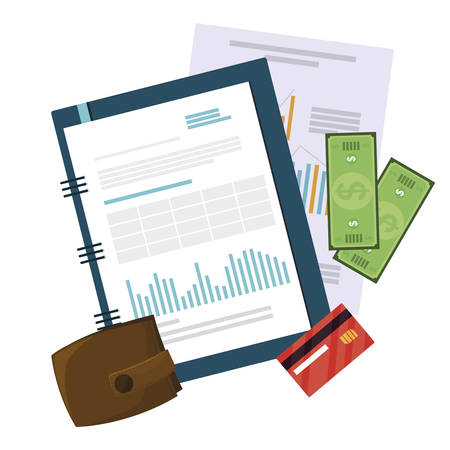1. Understanding Quarterly Estimated Taxes
If you’re a freelancer or independent contractor in the United States, understanding quarterly estimated taxes is crucial for staying on top of your finances and avoiding surprises at tax time. Let’s break down what these taxes are, who needs to pay them, and why they matter.
What Are Quarterly Estimated Taxes?
Quarterly estimated taxes are payments you make to the IRS four times a year to cover your income tax and self-employment tax. Unlike traditional employees who have taxes withheld from their paychecks, freelancers and independent contractors are responsible for paying their own taxes as they earn income throughout the year.
Who Needs to Pay Quarterly Estimated Taxes?
You generally need to pay quarterly estimated taxes if both of these apply:
- You expect to owe $1,000 or more in federal tax for the year (after subtracting withholding and refundable credits).
- Your income isn’t subject to enough tax withholding (common for freelancers, independent contractors, gig workers, and small business owners).
This means if you receive a 1099 form instead of a W-2 from clients, it’s likely you need to consider estimated payments.
Why Are They Important?
Paying estimated taxes helps you avoid underpayment penalties from the IRS. It also keeps you from having a huge tax bill in April since you’re spreading your payments out through the year. Here’s a quick look at why quarterly estimated taxes matter:
| Reason | Why It Matters |
|---|---|
| Avoid Penalties | The IRS can charge interest and penalties if you don’t pay enough tax during the year. |
| Manage Cash Flow | Making regular payments can help prevent a large, unexpected bill when you file your annual tax return. |
| Stay Organized | Staying on schedule with tax payments makes it easier to keep accurate records for your business. |
Who Is Typically Required to Pay?
- Sole proprietors
- Independent contractors
- Freelancers (writers, designers, consultants, etc.)
- Partners in partnerships
- S corporation shareholders
If this sounds like you, understanding how quarterly estimated taxes work is an essential part of running your business smoothly!
2. Gathering Your Income and Expense Information
Why Accurate Record-Keeping Matters
Before you can estimate your quarterly taxes, you need a clear picture of your business income and expenses. As a freelancer or independent contractor in the U.S., keeping your financial records organized is not just good practice—it’s essential for staying compliant with IRS rules and making tax time less stressful.
Tracking Your Income
Start by keeping detailed records of every dollar you earn. This includes payments from clients, sales, tips, commissions, and any other income sources related to your freelance work. Its best to track income as it comes in rather than trying to piece it together later.
Common Methods to Track Income:
- Spreadsheet: Use Excel or Google Sheets to log each payment with date, client name, amount, and service provided.
- Accounting Software: Tools like QuickBooks Self-Employed or FreshBooks automatically import and categorize income from connected accounts.
- Manual Logs: Keep a physical ledger or notebook if you prefer writing things down.
Organizing Receipts and Business Expenses
You can deduct legitimate business expenses from your income to reduce your taxable earnings. To do this, save all receipts and proof of purchase for things like office supplies, software subscriptions, mileage, home office costs, marketing, and professional development.
Best Practices for Managing Expenses:
- Digital Storage: Scan or photograph paper receipts and store them in cloud folders labeled by month or category.
- Expense Tracking Apps: Use apps like Expensify or Shoeboxed to keep digital copies and categorize expenses automatically.
- Categorize Regularly: Don’t wait until the end of the year—set aside time each week or month to organize receipts and enter expenses.
Tallying Your Net Earnings
Your net earnings are what’s left after subtracting business expenses from your total income. This is the number you’ll use to estimate your quarterly taxes.
| Description | Amount ($) |
|---|---|
| Total Income (Jan–Mar) | $15,000 |
| – Office Supplies | $500 |
| – Software Subscriptions | $300 |
| – Marketing Costs | $700 |
| – Mileage (Business Use) | $200 |
| = Net Earnings (for quarter) | $13,300 |
Tip: Consistency Pays Off!
The more consistently you track and organize your finances throughout the year, the easier it will be to calculate accurate estimated taxes—and avoid any surprises come tax season.

3. Figuring Out Your Taxable Income
Step-by-Step Guide to Calculating Your Taxable Income
If you’re a freelancer or independent contractor in the U.S., figuring out your taxable income is key to estimating your quarterly taxes. Here’s how you can break it down:
Step 1: Add Up All Your Business Income
Start by adding up every dollar you’ve earned from your freelance gigs or contracts. This includes payments from clients, tips, and any other business-related income.
| Income Source | Amount ($) |
|---|---|
| Client Payments | 15,000 |
| Online Sales | 2,000 |
| Other (e.g., tips) | 500 |
| Total Gross Income | 17,500 |
Step 2: Subtract Qualified Business Deductions
The IRS lets you subtract ordinary and necessary business expenses to lower your taxable income. Common deductions for self-employed folks include:
- Home office expenses (a portion of rent/mortgage, utilities)
- Internet and phone bills used for business
- Office supplies and equipment
- Professional services (legal, accounting)
- Travel and meals related to work (subject to limits)
- Health insurance premiums (if you qualify)
- Self-employment retirement contributions (like SEP IRA)
| Deduction Type | Amount ($) |
|---|---|
| Home Office Deduction | 1,200 |
| Internet & Phone | 600 |
| Supplies & Equipment | 800 |
| Total Deductions | 2,600 |
Step 3: Calculate Your Net Earnings (Taxable Income)
Your net earnings are what’s left after subtracting your business deductions from your gross income. This is the number you’ll use to figure out how much tax you owe.
| Description | Amount ($) |
|---|---|
| Total Gross Income | 17,500 |
| – Total Deductions | (2,600) |
| = Net Earnings (Taxable Income) | 14,900 |
Step 4: Factor in Common Credits for Self-Employed Individuals
If you qualify for tax credits—like the Earned Income Tax Credit or credits for health insurance—they’ll reduce the total tax you owe after you calculate it based on your taxable income. But remember: credits come after you estimate the tax owed on your net earnings.
Quick Recap Table: Steps to Find Your Taxable Income
| Step | Description/Example Amount ($) |
|---|---|
| Add Gross Income | $17,500 |
| – Subtract Deductions | ( $2,600 ) |
| = Net Earnings (Taxable Income) | $14,900 |
| – Apply Credits (if applicable) | (After calculating estimated tax) |
This process gives you a clear picture of how much of your freelance or contract income will actually be taxed each quarter. Keeping good records all year makes this calculation way easier when it’s time to pay those estimated taxes!
4. Calculating Your Quarterly Tax Payments
Step 1: Estimate Your Annual Income
Start by figuring out how much money you expect to make for the year from all freelance or independent contractor jobs. You can use last year’s numbers as a guide, or if you’re new, estimate based on current projects and expected clients.
Step 2: Calculate Federal Self-Employment Taxes
If you’re self-employed, you need to pay both the employee and employer portions of Social Security and Medicare taxes. The self-employment tax rate is 15.3% (12.4% for Social Security and 2.9% for Medicare). Only about 92.35% of your net earnings are subject to self-employment tax.
| Type | Rate | Applied To |
|---|---|---|
| Social Security | 12.4% | First $160,200 of net earnings (2023 limit) |
| Medicare | 2.9% | No income limit |
How to Calculate:
- Multiply your estimated annual net earnings by 92.35% (or 0.9235).
- Multiply that number by 15.3% (or 0.153) to get your self-employment tax.
Step 3: Estimate Federal Income Tax
Add up your self-employment tax from Step 2 and estimate your federal income tax using the IRS tax brackets for your filing status (single, married, etc.). Don’t forget to subtract any deductions or credits you qualify for—like the standard deduction or business expenses.
Example Table: Simplified Estimated Calculation
| Description | Amount ($) |
|---|---|
| Estimated Gross Income | $50,000 |
| Business Expenses | – $10,000 |
| Net Earnings | $40,000 |
| Self-Employment Tax (15.3%) | $5,654 (approx.) |
| Federal Income Tax (after deductions/credits) | $2,500 (example) |
| Total Estimated Taxes for Year | $8,154 |
| Quarterly Payment (divide by 4) | $2,038.50 per quarter |
Step 4: Check State Income Tax Requirements
If you live in a state with income tax, check with your state’s Department of Revenue for specific forms and rates. Add the estimated state tax amount to your total annual estimate before dividing into quarterly payments.
Step 5: Divide Into Four Quarterly Payments
Add together your estimated federal income tax, self-employment tax, and any state taxes owed for the year. Divide the total by four to get your quarterly payment amount. Make sure each payment is sent in by the IRS deadlines: April 15, June 15, September 15, and January 15 of the following year.
5. How and When to Pay Your Estimated Taxes
IRS Payment Options for Freelancers and Independent Contractors
Once you’ve calculated your quarterly estimated taxes, it’s time to pay the IRS. The IRS makes it pretty convenient with several payment options designed for self-employed professionals:
| Payment Method | Description |
|---|---|
| Direct Pay (Online) | Pay directly from your checking or savings account through the IRS Direct Pay portal. No fees required. |
| Electronic Federal Tax Payment System (EFTPS) | Set up an EFTPS account at eftps.gov. You can schedule payments in advance and keep track of all transactions for free. |
| Debit or Credit Card | You can pay online or by phone using a debit or credit card, but be aware that third-party processors charge a fee for this convenience. |
| Check or Money Order | Mail your payment with a completed Form 1040-ES voucher to the address listed on the form instructions. Make sure the check is made out to “United States Treasury.” |
| IRS2Go Mobile App | The official app from the IRS lets you pay via Direct Pay or by card from your smartphone. |
Quarterly Estimated Tax Deadlines
The IRS expects freelancers and independent contractors to pay estimated taxes four times a year. Here are the typical deadlines:
| Payment Period | Deadline Date |
|---|---|
| January 1 – March 31 | April 15* |
| April 1 – May 31 | June 15* |
| June 1 – August 31 | September 15* |
| September 1 – December 31 | January 15 (following year)* |
*If the deadline falls on a weekend or federal holiday, the due date moves to the next business day.
Tips for Staying Organized and Avoiding Penalties
Create Reminders for Deadlines
Add all quarterly tax due dates to your digital calendar with alerts a week in advance. This helps you avoid last-minute scrambling and late payments.
Keep Detailed Records of Payments and Income
Maintain a folder—digital or physical—for all tax-related documents: payment confirmations, income summaries, expense receipts, and IRS correspondence. This way, you’ll have everything handy if you ever need to reference your payment history or handle an audit.
Avoid Penalties and Interest Charges
If you miss a deadline or underpay, the IRS may charge penalties and interest. To prevent this:
- Always aim to pay at least as much as your prior year’s total tax liability, divided evenly among each quarter (“safe harbor” rule).
- If your income fluctuates during the year, recalculate your estimated payments as needed so you’re not underpaying.
- If you make more than expected, consider making an additional payment before the next deadline.
- If you overpay, you can apply any excess toward next year’s estimated taxes or request a refund when filing your annual return.
Automate Your Payments When Possible
The EFTPS system allows you to schedule recurring payments ahead of time. Automating this process can take one more thing off your plate and help ensure you never miss a deadline.
Pro Tip: Use Tax Software or Work With a Pro
If quarterly taxes feel overwhelming, tax software like QuickBooks Self-Employed, TurboTax, or working with a certified public accountant (CPA) can help keep everything organized and accurate throughout the year.


